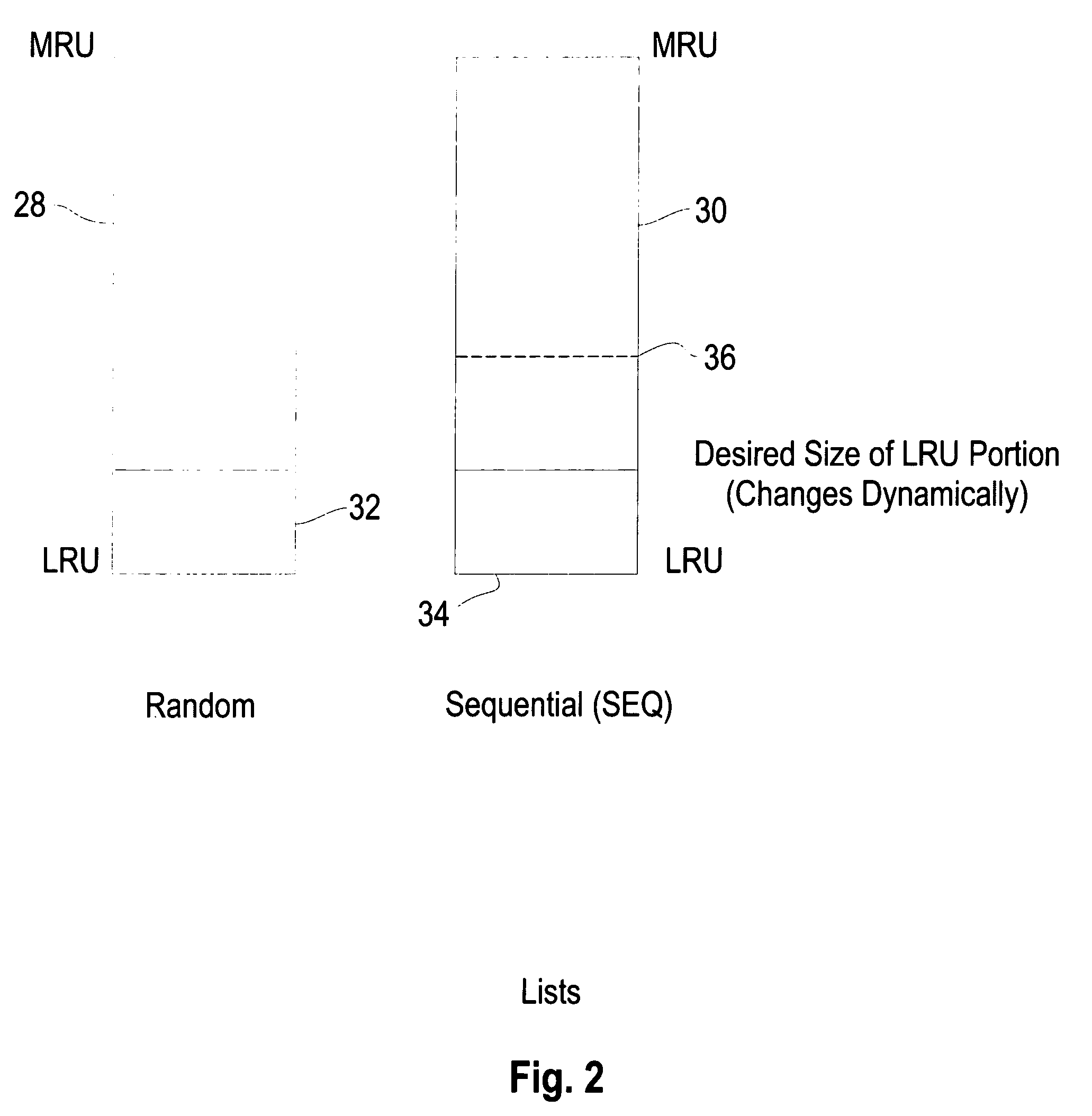System and method for dynamic sizing of cache sequential list
- Summary
- Abstract
- Description
- Claims
- Application Information
AI Technical Summary
Benefits of technology
Problems solved by technology
Method used
Image
Examples
Embodiment Construction
[0024] Referring initially to FIG. 1, a system is shown, generally designated 10, that illustrates one non-limiting environment in which the present invention can be used. In general, the present invention is a system for managing a data cache that caches data from a slower memory. For instance, the present invention may be implemented in database systems such as DB2 and Oracle, as well as RAID-based systems such as the present assignee's “Shark” system, as well as other systems, such as individual hard disk drives, etc. Accordingly, it is to be understood that while FIG. 1 illustrates one non-limiting implementation that has a “Shark” architecture, it is but representative of the environments that the present invention finds use. Thus, the present invention may be implemented in a file system, database system, or other system that must allocate space for variable-sized data objects. In one intended embodiment, the processor or processors (computers) of the present invention may be ...
PUM
 Login to View More
Login to View More Abstract
Description
Claims
Application Information
 Login to View More
Login to View More - R&D
- Intellectual Property
- Life Sciences
- Materials
- Tech Scout
- Unparalleled Data Quality
- Higher Quality Content
- 60% Fewer Hallucinations
Browse by: Latest US Patents, China's latest patents, Technical Efficacy Thesaurus, Application Domain, Technology Topic, Popular Technical Reports.
© 2025 PatSnap. All rights reserved.Legal|Privacy policy|Modern Slavery Act Transparency Statement|Sitemap|About US| Contact US: help@patsnap.com



